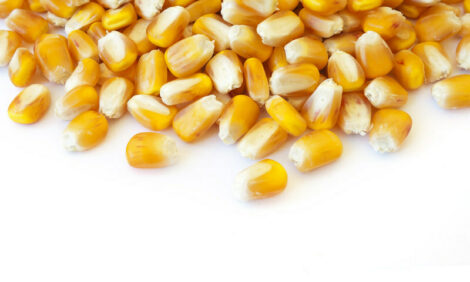



Hipramune: a New Adjuvant in Veterinary Vaccines
Recent advances in our understanding of immunology have allowed the detailed study of the immunological properties of adjuvants and the development of new and more potent forms, according to Hipra.Introduction
Throughout the history of vaccine development, science has always
focused on finding a safe and efficacious immune response. This
could already be seen in the early stages of vaccine immunology in the
late eighteenth century, from the first tests against smallpox by
Edward Jenner (Riedel, 2005) followed by the research of Louis
Pasteur in the nineteenth century and up until the present.
The first descriptions of the use of adjuvants dates from the 1920s
(Schijns, 2001) and the list of substances with adjuvantal properties
has been growing ever since then, alongside technological development
in the field of vaccines (formulation of subunits, peptides,
nucleic acid fragments, etc.). Modern immunology of the last few
decades has opened the door to detailed studies of the immunological
properties of these substances and the development of new and more
potent adjuvants.
Key Aspects of Immunology
Some of the latest advances in modern immunology are the description
of the systems of pathogen recognition receptors (PRR) such as
Toll-like receptors (TLR) and the role of dendritic cells in immune
response development (Iwasaky et al. 2004).
The development of vaccines has taken advantage of these advances to
study and develop better adjuvants according to this knowledge. Therefore,
the main job adjuvants seem to have is to establish a strong link
between the non-specific immune response and specific immune response
(Werling et al., 2003, Mazzoni et al., 2004, Garlapati et al., 2008).
In this brief description of the first reactions of the immune response
at the inoculation site of the vaccine, let us say the first are the antigen
presenting cells (APCs), which are mainly macrophages and dendritic
cells (DCs). They are responsible for antigen capture and presentation
to the rest of the immune system. The DCs can be found throughout
the body in subcutaneous tissue or muscle, when vaccines are given by
intramuscular injection and in mucosal tissues for vaccines given orally
or through the respiratory tract. Once the antigens have been captured,
the APCs will trigger the adaptive immune response.
Traditionally, innate and specific immunity were understood as
independent pathways in the immune response. But in reality, both
types of responses are very close at least during the first steps in
developing an immune response. Thus, we now know that the classical
strategies of the innate system for recognising pathogens have a great
significance in the specific response generated (Werling et al. 2003).
These strategies are based on the recognition of pathogen-associated
molecular patterns (PAMPs) by mononuclear cells. Toll-like receptors
(TLR) and other PRR systems of mononuclear cells are the main
routes of PAMP recognition that these cells use to recognise the
presence of the pathogen and stimulate dendritic cell maturation.
Finally it has been reported that ginseng can stimulate mononuclear
cells by means of TLR-4 (Nayaka et al., 2004).
Ginseng Saponins as an Adjuvant
With this immunological summary, the vaccinal immune response
should be understood as the result of all components at once. In the
case of HIPRAMUNE® G (the new adjuvant released by Laboratorios
HIPRA for its vaccine, SUISENG®) an aluminium component (aluminium
hydroxide) is included as is a plant extract (ginseng saponins) (Sun et
al., 2008; Rivera et al., 2003).
Ginseng saponins (the ginsenosides) are the pharmacologically active
ingredient of the extracts of this root. These saponins, unlike others of
plant origin, have low toxicity and a haemolytic effect that makes them
ideal for use as vaccine adjuvants.

Different immunological effects of ginseng root (Panax ginseng) have
been described in scientific literature. If we start with the most primary
specific response, some authors have reported a general increase in
oxidative reactions and phagocytosis of polymorphonuclear leukocytes
and macrophage cells (Oh et al., 2004). In addition, there has been a
proliferation of immune cells in many studies due to the activity of
ginsenosides. This has been described in mouse, cattle, poultry and
rabbit cells (Joo et al., 2004; Sun et al., 2005).
If we focus further on the specific immune response to certain antigens,
most of the articles published study the stimulation of specific antibodies
due to the effects of ginseng. The increase in specific immunoglobulins
has been demonstrated in many species, including mice, rats, rabbits,
chickens, pigs and humans (Scaglione et al., 1996).
Some studies have succeeded in characterising the pattern of cytokines
expressed after stimulation with ginseng derivates. Thus, Keranova et al.
(1990) observed an increase in the expression of interleukin (IL)-1 in
mouse macrophages. The same effect was described by Nayaka et al. in
2004, as was an increase in IL-6 the INF. Kim et al. (1998) described an
increase in IL-2 in stimulated lymphocytes. In another study with mouse
spleen cells, it was described how the F3 ginsenoside induced and
increased the synthesis of IL-2 and INF. and a reduction in the expression
of IL-4 and IL-10 (Yu et al., 2004). Larsen et al. (2004) described an enhancement
of the synthesis of IL-12 in peripheral blood mononuclear cells of
humans (PBMCs) stimulated in vitro and suggested that there could be a
strong induction of the TH1 immune response. However, other research
groups (Lee et al, 2004) found that ginsenosides could induce an increase
in the synthesis of the IL-2 and IL-4 cytokines in CD4+ T lymphocytes.
With these observations and other results from the project, the authors
suggested that ginseng could induce a type 2 (Th2) immune response.
Another study, published the same year (Liou et al., 2004), showed that
ginseng induced an increase in the expression of Th1 (related to IL-2 and
IFN.) as well as Th2 (related to IL-4 and IL-10). These authors also
observed an increase in IgG, IgM and IgA due to stimulation with ginseng.
The paper concludes that the ginseng extract can regulate the production
of antibodies by stimulating the synthesis of Th1 cytokines (IL-2, IFN.)
and Th2 (IL4, IL10).
Hipramune G: Ginseng Saponins Plus Aluminium Hydroxide
In pursuit of the ideal adjuvant, the combination of different substances
is a very broad field to explore. The final objective of the combinations
is to be able to combine the benefits and properties of substances
in a new and better formulation. In the case of ginseng saponins,
the synergistic effect of the combination with aluminium hydroxide has
been demonstrated in different species.
A study conducted by Sun et al. (2008) used an immunisation model
with ovalbumin to assess different adjuvant formulations in vaccines.
The authors compared formulations that included aluminium hydroxide,
Ginsenoside Rg1, and the combination of these two substances.
They characterised the immune response (Th1 and Th2) by measuring
levels of IgG isotype in serum, the production of IFN. and IL-5. Their
main conclusions were that ginsenosides promoted both the Th1 and
Th2 response and that the combination of aluminium and ginsenosides
regulated the Th1/Th2 response, thereby obtaining improved
protection.
Rivera et al. (2003) also observed this effect in guinea pigs when
aluminium hydroxide was combined with ginsenosides. Their results
showed that the combination of ginseng and aluminium enhanced the
production of antibodies compared with vaccines containing either
substance on their own. Rivera et al, 2003b subsequently performed
the same experiment in pigs and demonstrated the same effect as in
guinea pigs. The study showed that animals vaccinated with the
combination of aluminium hydroxide plus ginseng had higher levels of
specific antibodies (IgGs) than other groups.
In regard to the mechanism
of action, the study concluded by citing the hypothesis that this
effect must be caused by the known depot effect of aluminium hydroxide
along with the immunological properties of ginseng saponins.

Bibliography
Garlapati, S., M. Facci, M. Polewicz, S. Strom, L.A. Babiuk, G. Mutwiri, R.E. Hancock,
M.R. Elliott, and V. Gerdts. 2008. Strategies to link innate and adaptive immunity when
designing vaccine adjuvants. Vet.Immunol.Immunopathol.
Iwasaki, A. and R. Medzhitov. 2004. Toll-like receptor control of the adaptive immune
responses. Nat.Immunol. 5:987-995.
Joo S.S., Won T.J., Kim M.S. and Lee D.I. 2004. Hematopoietic effect of ginsenoside Rg3 in ICR
mouse primary cultures and its application to a biological response modifier. Fitoterapia.
Kenarova et al. 1990. Immunomodulating Activity of Ginsenoside Rg1 from Panax Ginseng.
Kim K.H., Lee Y.S., Jung I.S., Park S.Y., Chung H.Y., Lee I.R. and Yun Y.S. 1998. Acidic polysaccharide
from Panax ginseng, ginsan, induces Th1 cell and macrophage cytokines and
generates LAK cells in synergy with rIL-2. Planta Med.
Lee, E.J., E. Ko, J. Lee, S. Rho, S. Ko, M.K. Shin, B.I. Min, M.C. Hong, S.Y. Kim and H. Bae. 2004. Ginsenoside Rg1 enhances CD4 (+) T-cell activities and modulates Th1/Th2 differentiation. Int. Immunopharmacol. 4:235-244.
Liou, C.J., M.L. Li and J. Tseng. 2004. Intraperitoneal injection of ginseng extract
enhances both immunoglobulin and cytokine production in mice. Am.J.Chin Med. 32:75-88.
Mazzoni, A. and D.M. Segal. 2004. Controlling the Toll road to dendritic cell polarization. J.Leukoc.Biol. 75:721-730.
Nakaya T.At., Kita M., Kuriyama H.,; Iwakura Y. and Imanishi J. 2004. Panax ginseng induces
production of proinflammatory cytokines via toll-like receptor. J Interferon Cytokine Res.
Oh G.S., Pae H.O., Choi B.M., Seo E.A., Kim D.H., Shin M.K., Kim J.D., Kim J.B. and Chung H.T. 2004. 20(S)-Protopanaxatriol, one of ginsenoside metabolites, inhibits inducible nitric
oxide synthase and cyclooxygenase-2 expressions through inactivation of nuclear
factor-kappaB in RAW 264.7 macrophages stimulated with lipopolysaccharide. Cancer Letters.
Riedel, S. 2005. Edward Jenner and the history of smallpox and vaccination. Proc. (Bayl.Univ Med.Cent.). 18:21-25.
Rivera, E., A. Daggfeldt and S. Hu. 2003. Ginseng extract in aluminium hydroxide
adjuvanted vaccines improves the antibody response of pigs to porcine parvovirus
and Erysipelothrix rhusiopathiae. Vet.Immunol.Immunopathol. 91:19-27.
Rivera, E., S. Hu and C. Concha. 2003. Ginseng and aluminium hydroxide act synergistically
as vaccine adjuvants. Vaccine. 21:1149-1157.
Rivera, E., P.F. Ekholm, M. Inganas, S. Paulie and K.O. Gronvik. 2005. The Rb1 fraction of
ginseng elicits a balanced Th1 and Th2 immune response. Vaccine. 23:5411-5419.
Scaglione F., Cattaneo G., Alessandria M. and Cogo R. 1996. Efficacy and safety of the
standardised Ginseng extract G115 for potentiating vaccination against the
influenza syndrome and protection against the common cold. Drugs Exp Clin Res.
Schijns, V. 2001. Activation and programming of adaptive immune responses by vaccine
adjuvants. Veterinary Sciences Tomorrow. 3: 1-7.
Sun et al. 2005. Relationship between haemolytic and adjuvant activity and structure of
protopanaxadiol-type saponins from the roots of Panax notoginseng. Vaccine.
Sun, J., S. Hu and X. Song. 2007. Adjuvant effects of protopanaxadiol and protopanaxatriol
saponins from ginseng roots on the immune responses to ovalbumin in mice.
Vaccine. 25:1114-1120.
Sun, J., X. Song, and S. Hu. 2008a. Ginsenoside Rg1 and aluminium hydroxide synergistically
promote immune responses to ovalbumin in BALB/c mice. Clin.Vaccine Immunol. 15:303-307.
Sun, Y., H. Tong, M. Li, Y. Li, S. Guan, and J. Liu. 2008b. Immunological adjuvant effect of
Japanese ginseng saponins (JGS) on specific antibody and cellular response to
ovalbumin and its haemolytic activities. Vaccine.
Werling, D. and T.W. Jungi. 2003. TOLL-like receptors linking innate and adaptive immune
response. Vet.Immunol.Immunopathol. 91:1-12.
Yu, J.L., D.Q. Dou, X.H. Chen, H.Z. Yang, N. Guo and G.F. Cheng. 2004. Immunoenhancing
activity of protopanaxatriol-type ginsenoside-F3 in murine spleen cells. Acta
Pharmacol.Sin. 25:1671-1676.
Larsen, M.W., C. Moser, N. Hoiby, Z. Song and A. Kharazmi. 2004. Ginseng modulates
the immune response by induction of interleukin-12 production. APMIS. 112:369-373.









